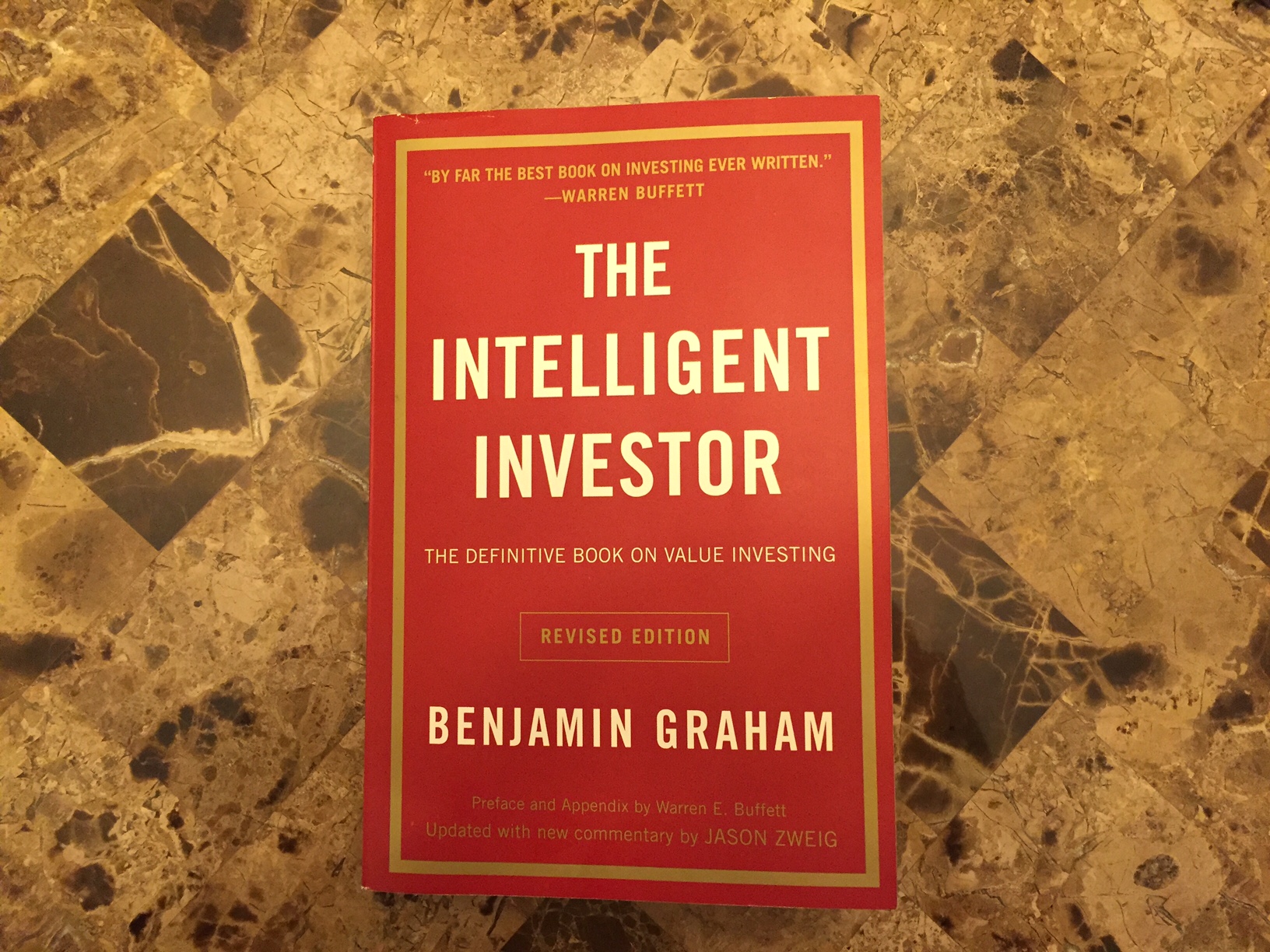With interest rates so low today, investors wonder where they can keep their money safe both in terms of their principal and purchasing power. We recently discussed Fixed Annuities as one substitute for CDs or bonds, with the conclusion that Annuities are best for investors over 59 1/2 who don’t need liquidity for at least five years. For others, one often overlooked option is Inflation-linked Savings bonds, officially known as Series I Bonds.
Can You Trust Your Financial Advisor?
Trust is earned and not given. While there’s no shortcut to years of working together and getting to know each other, there is one question that every client should ask their advisor: Are you a Fiduciary?
A Fiduciary has a legal obligation to place your interests ahead of their own. The alternative, of course is a salesperson whose purpose is self-serving: to represent their company and maximize profits. Which would you trust for objective, unbiased advice?
What Do Low Interest Rates Mean For Your Retirement?
A 2013 study from Prudential considered whether a hypothetical 65-year old female retiree would have enough retirement income to last her lifetime. In their scenario, they calculated a 21% possibility of failure, given market volatility and longevity risk. When they added in a third factor of “an extended period of low interest rates”, the failure rate rose to 54%.
Five Ways To Invest Tax-Free
“It doesn’t matter how much you make, but how much you keep.” Over time, taxes can be a significant drag on returns, especially for those who are in the higher tax brackets. Today, many families are also hit with the 3.8% Medicare surtax on investment income. If you are in the top tax bracket, you could be paying as much as 43.4% (39.6% plus the 3.8% Medicare surtax) for interest income or short-term capital gains.
Should You Invest Or Pay Off Student Loans First?
One of the most frequent questions I hear from younger investors is whether they should hold off on investing until they pay off their student loans. College tuition has been growing at a rate much higher than inflation for several decades, and for many students, these costs are financed. It’s not uncommon for a student to graduate with six-figures in debt today.
For many, they view their college loans as the monkey on their back and want nothing more that to get rid of this debt as soon as possible. This intense dislike of debt is probably a good thing, especially if it encourages frugal decision making and a focus on financial responsibility. With retirement being 40 years away, investing doesn’t seem to offer the same immediate benefit as plowing as much cash as possible into eliminating student loans.
The problem with waiting to invest is that you miss out on the benefits of compounding. Let’s say Eager Eddie saves $5,000 a year starting at age 30. Earning 8%, Eddie will have $861,584 in his retirement account at age 65. Waiting Walter delays until age 40 to get started, but then invests double of what Eddie saved, $10,000 a year. Believe it or not, at age 65, Walter will still have less than Eddie, only $731,059. Waiting those ten years cost Walter $130,000, even though he contributed twice as much per year once he got started. When it comes to retirement saving, there truly is no making up for lost time.
By contributing to your retirement plan at work, you may be eligible for a company match. But even if there is not a company match, being able to make a tax deductible contribution will provide an immediate benefit of 25%, 28% or more, depending on your tax bracket.
Some will point out that with interest rates of 6% or higher, that there is no guarantee that their investment return will exceed the rate they would save on paying down their loan. Wouldn’t it be better to take the “sure thing” of saving 6% rather than the venturing into the unknowns of the investment world? The problem with this line of thinking is that your debt will decrease each year, so a 6% interest rate will cost fewer and fewer dollars each year. However, as your investment portfolio grows through contributions and compounding, a 6% return will equate to larger dollar growth rates. In other words, a 6% return on a $500,000 portfolio is ten times more than a 6% cost on a $50,000 loan.
My advice is don’t wait to get started investing. It’s not a choice of either-or; you have to find a way to do both investing and paying off your student loans.
A couple of additional considerations:
- If you ever needed money, you could access your investments (with possible penalties and taxes for retirement accounts), but if you put extra towards your loans, you cannot access that money later.
- You may be able to deduct student loan interest paid, up to $2,500 per year. This is subject to a phaseout if your income exceeds $65,000 (single) or $130,000 (married). See IRS Publication 970 for details.
- If you have Federal loans, make sure you read my article on Four Student Loan Forgiveness Programs, which also explains Income Based Repayment plans.
Five Things To Do When The Market Is Down
When the market is down, it hurts to look at your portfolio and see your account values dropping. And when we experience pain, we feel the need to do something. Unfortunately, the knee-jerk reaction to sell everything almost always ends up being the wrong move, a fact which although obvious in hindsight, is nevertheless a very tempting idea when we feel panicked.
Even when we know that market cycles are an inevitable part of being a long-term investor, it is still frustrating to just sit there and not do anything when we have a drop. What should you do when the market is down? Most of the time, the best answer is to do nothing. However, if you are looking for ways to capitalize on the current downturn, here are five things you can do today.
1) Put cash to work. The market is on sale, so if you have cash on the sidelines, I wouldn’t hesitate to make some purchases. Stick with high quality, low-cost ETFs or mutual funds, and avoid taking a flyer on individual stocks. If you’ve been waiting to fund your IRA contributions for 2015 or 2016, do it now. Continue to dollar cost average in your 401k or other automatic investment account.
2) If you are fully invested, rebalance now; sell some of your fixed income and use the proceeds to buy more stocks to get back to your target asset allocation. Of course, most investors who do it themselves don’t have a target allocation, which is their first mistake. If you don’t have a pre-determined asset allocation, now is a good time to diversify.
3) Harvest losses. In your taxable account, look for positions with losses and exchange those for a different ETF in the same category. For example, if you have a loss on a small cap mutual fund, you could sell it to harvest the loss, and immediately replace it with a different small cap ETF or fund.
By doing an immediate swap, you maintain your overall allocation and remain invested for any subsequent rally. The loss you generate can be used to offset any capital gains distributions that may occur later in the year. If the realized losses exceed your gains for the year, you can apply $3,000 of the losses against ordinary income, and the remaining unused losses will carry forward to future years indefinitely. My favorite thing about harvesting losses: being able to use long-term losses (taxed at 15%) to offset short-term gains (taxed as ordinary income, which could be as high as 43.4%).
4) Trade your under-performing, high expense mutual funds for a low cost ETF. This is a great time to clean up your portfolio. I often see individual investors who have 8, 10, or more different mutual funds, but when we look at them, they’re all US large cap funds. That’s not diversification, that’s being a fund collector! While you are getting rid of the dogs in your portfolio, make sure you are going into a truly diversified, global allocation.
5) Roth Conversion. If positions in your IRA are down significantly, and you plan to hold on to them, consider converting those assets to a Roth IRA. That means paying tax on the conversion amount today, but once in the Roth, all future growth and distributions will be tax-free. For example, if you had $10,000 invested in a stock, and it has dropped to $6,000, you could convert the IRA position to a Roth, pay taxes on the $6,000, and then it will be in a tax-free account.
Before making a Roth Conversion, talk with your financial planner and CPA to make sure you understand all the tax ramifications that will apply to your individual situation. I am not necessarily recommending everyone do a Roth Conversion, but if you want to do one, the best time is when the market is down.
What many investors say to me is that they don’t want to do anything right now, because if they hold on, those positions might come back. If they don’t sell, the loss isn’t real. This is a cognitive trap, called “loss aversion”. Investors are much more willing to sell stocks that have a gain than stocks that are at a loss. And unfortunately, this mindset can prevent investors from efficiently managing their assets.
Hopefully, now, you will realize that there are ways to help your portfolio when the market is down, through putting cash to work, rebalancing, harvesting losses for tax purposes, upgrading your funds to low-cost ETFs, or doing a Roth Conversion. Remember that market volatility creates opportunities. It may be painful to see losses today, but experiencing the ups and downs of the market cycle is an inevitable part of being a long-term investor.
Qualified Charitable Distributions From Your IRA
For several years, taxpayers have had an opportunity to make Qualified Charitable Distributions, or QCDs, from their IRA. This was originally offered for just one year and then subsequently was renewed each December, an uncertainty which made it difficult and frustrating for planners like myself to advise clients. Luckily, this year Congress made the QCD permanent. Here is what it is, who it may benefit, and how to use it.
A QCD is a better way to give money to charity by allowing IRA owners to fulfill their Required Minimum Distribution with a charitable donation. To do a QCD, you must be over age 70 1/2 at the time of the distribution, and have the distribution made payable directly to the charity.
If you are over 70 1/2, you must take out a Required Minimum Distribution from your IRA each year, and this distribution is reported as taxable income. When you make a qualified charitable contribution, you can deduct that amount from your taxes, through an itemized deduction. The QCD takes those two steps – an IRA distribution and a charitable contribution – and combines them into one transaction which can fulfill your RMD requirement while not adding to your Adjusted Gross Income (AGI) for the year.
The maximum amount of a QCD is $100,000 per person. A married couple can do $100,000 each, but cannot combine or share these amounts. For most IRA owners, they will likely keep their QCD under the amount of their RMD. However, it is possible to donate more than your RMD, up to the $100,000 limit. So if your goal is to leave your IRA to charity, you can now transfer $100,000 to that charity, tax-free, every year.
The confusing thing about the QCD is that for some taxpayers, there may be no additional tax benefit. That is to say, taking their RMD and then making a deductible charitable contribution may lower their taxes by exactly the same amount as doing a QCD. Who will benefit from a QCD, then? Here are five situations where doing a QCD would produce lower taxes than taking your RMD and making a separate charitable contribution:
1) To deduct a charitable contribution, you have to itemize your deductions. If you take the standard deduction (or would take the standard deduction without charitable giving), you would benefit from doing a QCD instead. That’s because under the QCD, the transaction is never reported on your AGI. Then you can take your standard deduction ($6,300 single, or $12,600 married, for 2016) and not have to itemize.
2) If you have a high income and your itemized deductions are reduced or phased out under the Pease Restrictions, you would benefit from doing a QCD. The Pease Restriction reduces your deductions by 3% for every $1 of income over $259,400 single, or $311,300 married (2016), up to a maximum reduction of 80% of your itemized deductions.
3) If you are subject to the Alternative Minimum Tax (AMT). The AMT frequently hits those who have high itemized deductions. With the QCD, we move the charitable contributions from being an itemized deduction to a direct reduction of your AGI.
4) If you are subject to the 3.8% Medicare Surtax on investment income. While IRA distributions are not part of Net Investment Income, they are part of your AGI, which can push other income above the $200,000 threshold ($250,000, married) subject to this tax.
5) If your premiums for Medicare Parts B and D are increased due to your income, a QCD can reduce your AGI.
You can make a QCD from a SEP or SIMPLE IRA, provided you are no longer making contributions to the account. You can also make a QCD from a Roth IRA, but since this money could be withdrawn tax-free, it would be preferable to make the QCD from a Traditional IRA. 401(k), 403(b), and other employer sponsored plans are not eligible for the QCD. If you want to do the QCD, you would need to rollover the account to an IRA first.
Charitable giving is close to our heart here at Good Life Wealth Management. We believe that true wealth is having the ability to fearlessly help others and to use our blessings to make the world a better place. If that’s your goal too, we can help you do this in the most efficient manner possible.
What To Do With Your CD Money
If you’ve had CDs mature over the past several years, you’ve faced the unfortunate reality of having to choose between reinvesting into a new CD that pays a miniscule rate, or moving your money into riskier assets and giving up your guaranteed rate of return and safety. Although you can earn a higher coupon with corporate bonds than CDs, those investments are volatile and definitely not guaranteed. I understand the desire for many investors to keep a portion of their money invested very conservatively in ultra-safe choices. So, I checked Bankrate.com this week for current CD rates on a 5-year Jumbo CD and here is what is offered by the largest banks in our area:
Bank of America 0.15%
JPMorgan Chase 0.25%
Wells Fargo 0.35%
Citibank 0.50%
BBVA Compass 0.50%
While there are higher rates available from some local and internet banks, it is surprising how many investors automatically renew and do not search for a better return. Others have parked their CD money in short-term products or cash, hoping that the Fed’s intention of raising rates in 2016 will soon bring the return of higher CD rates.
Unfortunately, it’s not a given that the economic conditions will be strong enough for the Fed to continue to raise rates in 2016 as planned. This week, the 10-year Treasury yield dropped below 2%, which is not strong endorsement of the likelihood of CD rates having a major rebound in 2016.
This is the new normal of low interest rates and slow growth. While rates could be nominally higher in 12 months, it seems very unlikely that we will see 4% or 5% yields on CDs anytime in the immediate future. Waiting out in cash is a sure-fire way to not keep up with inflation and lose purchasing power.
What do I suggest? You can keep your money safe – and earn a guaranteed rate of return – with a Fixed Annuity. I only recommend Fixed Annuities with a multi-year guaranteed rate. Like a CD, these have a fixed interest rate and set term. At the end of the term, you can take your investment and walk away.
Today, we can purchase a 5-year annuity with a rate of 2.9% to 3.1%, depending on your needs. I know that’s not a huge return, but it’s better than CDs, savings accounts, Treasury bonds, or any other guaranteed investment that I have found. Since an annuity is illiquid, I suggest investors set up a five year ladder, where each year 20% (one-fifth) of their money matures. When each annuity matures, you can keep out whatever money you need, and then reinvest the remainder into a new 5-year annuity.
The beauty of a laddered approach is that it gives you access to some of your money each year and it will allow your portfolio to reset to new interest rates gradually as annuities mature and are reinvested at hopefully higher rates. In the mean time, we can earn a better return to keep up with inflation and keep your principal guaranteed.
Issued by insurance companies, Annuities have a number of differences from CDs. Here are the main points to know:
- Annuities typically have steep penalties if you withdraw your money early. It’s important to always have other sources of cash reserves for emergencies. Consider an annuity as illiquid, and only invest long-term holdings.
- If you take money out of an annuity before age 59 1/2, there is a 10% premature distribution penalty, just like a retirement account. A 5-year annuity may be best for someone 55 or older.
- Money in annuity grows tax-deferred until withdrawn. If you rollover one annuity to another, the money remains tax-deferred. Most annuities will allow you to withdraw earnings without penalty and take Required Minimum Distributions (RMDs) from IRAs. Always confirm these features on an annuity before purchase.
- While CDs are insured by the FDIC, annuities are guaranteed at the state level. In Texas, every annuity company pays into the Texas Guaranty Association, which protects investors up to $250,000. If you have more than this amount to invest, I would spread it to multiple issuers, to stay under the limit with each company.
If you have CDs maturing and would like to learn more about Fixed Annuities, please contact me for more information.
Are Smart Beta ETFs Right for You?
Over the past several years, you may have heard about “Smart Beta ETFs”. Today, we will look at this concept and share some very important caveats that investors should know before they purchase a Smart Beta ETF for their portfolio. While the name sounds like it would be a sure thing, it is important for investors to understand that there is no guarantee that Smart Beta products will be able to deliver on their promises.
The first ETFs were all index funds, tracking major indices like the S&P 500 or the Dow. As ETFs grew in popularity, investment companies quickly added products representing other indices, sectors, styles, and countries. ETF companies will continue to create hundreds of new products each year to raise new assets and be able to charge more fees. Once every traditional index was replicated in an ETF, companies had to find more creative offerings. Will every product work and be successful? No, but there is such a pronounced first-mover advantage in the industry that many companies are willing to take the risk of launching dozens of new funds hoping that some will be a success.
The knock on traditional index ETFs is that they are weighted by market capitalization. That simply means that each stock is represented according to its total market value. What’s wrong with that? If you went back to 1999, Cisco briefly became the largest stock in the world, trading at over 100 times earnings. At that time, it represented more than 3% of every index fund. And when the stock fell by 90% during the tech crash, every index fund had a large loss. The problem with traditional index funds is that they have too much of the overvalued stocks and too little of the undervalued companies.
Smart Beta ETFs seek to avoid this issue of overweighting the most expensive stocks by using alternative weighting or selection criteria. Like an Index, Smart Beta is a hands-off strategy that is quantitatively driven and passive. There are quite a few different approaches to Smart Beta, including weighting by:
– Dividends (stocks represented by the size of their dividend stream)
– Volatility (emphasizing the Lowest Volatility stocks or combination of stocks)
– Fundamentals (such as book value, sales, or earnings)
– or even, equal weighted, where each company receives the same weight in the fund.
Here are five points you should consider before selecting a Smart Beta ETF.
1) Traditional indexing works well.
While the concern of overweighting expensive stocks sounds legitimate, I’d like to point out that in spite of this supposed flaw, a vast majority of actively managed funds fail to beat their benchmark over five years. According to the S&P Index Versus Active report, as many as 80% of active managers fall short. If it was so easy to pick out the undervalued stocks from the overvalued stocks, wouldn’t more fund managers be able to beat the market cap weighted index?
Everyone is looking for a way to out perform the market, but this remains very difficult to do. It will be interesting in 10 years to see how many of today’s Smart Beta products will have delivered superior returns.
2) Back-tested strategies do not always work as well going forward.
Smart Beta ETFs are created based on academic research looking at factors which would have produced strong returns historically. This is generally done using back-tested data, which gives us another concern. If we looked at stocks from 2000-2015, it was a very unusual period. Will the factors which worked over the past 10 or 15 years continue to generate market beating returns over the next 10 or 15 years? No one knows the answer to that; the future could be quite different than the past and back-tested strategies may not perform as hoped.
3) Smart Beta may be out of favor for extended periods.
The back-tested results look promising, with Smart Beta strategies beating their benchmarks, had the ETFs existed. While the long-term hypothetical returns look good, there can be stretches when this strategy is out of favor. It may have outperformed over 10 years, but it may have lagged in four, five, or even six of those years, only to make it up by strong performance in a couple of years. If you buy a Smart Beta ETF today, will you hold on to it if it lags the market for two years in a row? Three years in a row?
Some Smart Beta strategies correlate strongly with Value and will lag when Growth is in favor. Other strategies are defensive and will trail the market during bull markets and only enhance performance in bear markets. This makes for a difficult decision as to whether or not the current market is the right environment for a particular approach or factor. This creates the potential for market timing errors if investors chase returns by switching from one ETF to another, trying to capture the most advantageous style for any given year.
4) Smart Beta ETFs may be less diversified.
Since Smart Beta funds emphasize certain characteristics such as dividends, the funds may have a high concentration in specific sectors such as utilities, financials, or energy. In the years where those sectors perform poorly, Smart Beta funds could be volatile and disappointing.
5) Costs
Lastly, it’s not certain that the benefits of all Smart Beta funds will accrue to investors once we factor in the expense ratio, trading costs, and taxes. Luckily, ETFs are becoming highly competitive in terms of expenses, so many funds launched in the last two years have extremely low expense ratios. While we know the expense ratio, we don’t know what trading costs are incurred when a Smart Beta strategy buys and sells stocks, which most do on a quarterly or annual basis.
I’ve listed these five concerns about Smart Beta ETFs because I want to dispel the notion that these funds are a sure bet. However, I do think they are interesting and show promise. Perhaps some will deliver results. And this is another conundrum for investors: there are so many flavors of Smart Beta strategies today that we run the risk of picking the wrong one, and we end up with the fund that under performs. So this is not the simple choice of just replacing all of your traditional ETFs with a Smart Beta version and being guaranteed better results.
We’ve spent a lot of time analyzing Smart Beta ETFs and have included several in our clients’ portfolios. If you are looking to hand off your portfolio management to a professional, we are here to help. And while we manage your funds, we also take the time to explain our process, philosophy, and why we own each position.
The Investor and Market Fluctuations
In 1934, Benjamin Graham first published his treatise “The Intelligent Investor”. Graham is considered by many to be the father of Value Investing and was a teacher of Warren Buffett. He wrote about the difference between investing and speculating, and devoted a whole chapter to “The Investor and Market Fluctuations.” I can do no better than to share this excerpt and to note that his advice is as true today as it was 80 years ago.
“The most realistic distinction between the investor and the speculator is found in their attitude toward stock-market movements. The speculator’s primary interest lies in anticipating and profiting from market fluctuations. The investor’s primary interest lies in acquiring and holding suitable securities at suitable prices. Market movements are important to him in a practical sense, because they alternately create low price levels at which he would be wise to buy and high prices at which he certainly should refrain from buying and probably would be wise to sell.
It is far from certain that the typical investor should regularly hold off buying until low market levels appear, because this may involve a long wait, very likely the loss of income, and the possible missing of investment opportunities. On the whole it may be better for the investor to do his stock buying whenever he has money to put in stocks…
Aside from forecasting the movements of the general market, much effort and ability are directed on Wall Street toward selecting stocks or industrial groups that in matter of price will “do better” than the rest over a fairly short period in the future. Logical as this endeavor may seem, we do not believe it is suited to the needs or temperament of the true investor… As in all other activities that emphasize price movements first and underlying values second, the work of many intelligent minds constantly engaged in this field tends to be self-neutralizing and self-defeating over the years.
The investor with a portfolio of sound stocks should expect their prices to fluctuate and should neither be concerned by sizable declines nor become excited by sizable advances.”*
As much as markets have changed over the past century, what has not changed is human nature. That’s why Graham’s advice to never sell a stock just because it has gone down remains so relevant today. Be an investor and not a speculator; don’t think that you can predict what stock prices are going to do next. If you’re in it for the long-term, use market volatility as an opportunity to put money to work.
*The Intelligent Investor, Benjamin Graham, `Revised Edition, 2006, pp. 205-206.













